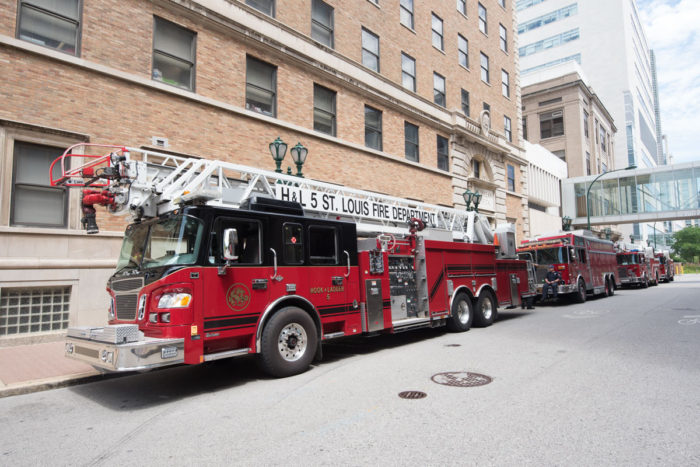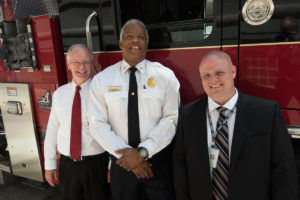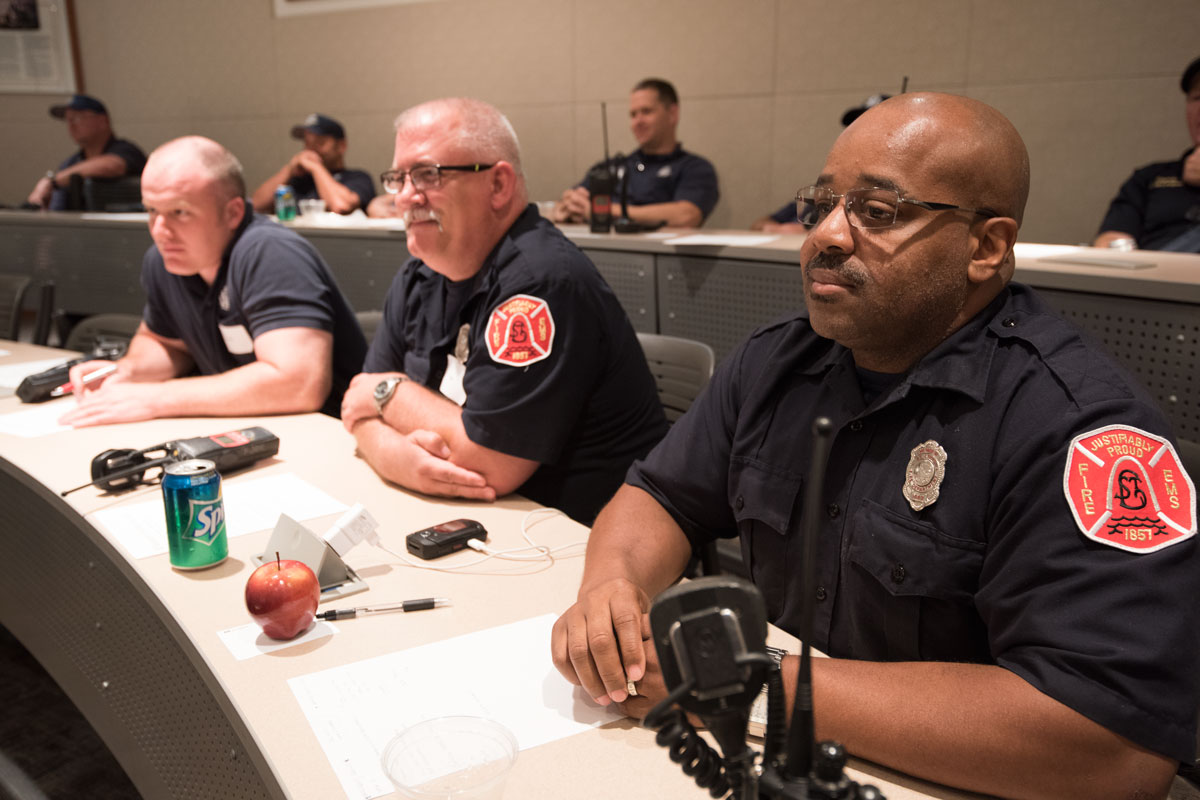City firefighters train for emergencies on Medical Campus
Fire department and university partnership aimed at improving fire safety, emergency response
 Robert Boston
Robert BostonSt. Louis Fire Department vehicles are lined up on Euclid Avenue on the Medical Campus. For three days in late June, the vehicles were stationed there as firefighters participated in a training program geared toward improving fire safety and emergency response at the medical school.
It’s not uncommon to see emergency vehicles on a medical campus. But for three days in late June, there were far more than usual at Washington University School of Medicine.
The St. Louis Fire Department vehicles were on the Medical Campus as part of a training program geared toward improving fire safety and emergency response at the medical school.
About 18 months ago, the fire department began working with the university’s Office of Environmental Health and Safety and the School of Medicine’s Facilities Management Department. Initially, the aim was for representatives from the three to inspect, together, every building at the medical school so that fire personnel would know the layout and have a good idea of what to expect in an emergency situation.
 Robert Boston
Robert BostonOut of those inspections rose a partnership initiative with the fire department. The first phase of that initiative began June 27, when some 40 fire department officers, firefighters and emergency medical technicians came to the Medical Campus for training regarding research-safety risks on the campus. The fire personnel participated in sessions with Emergency Management and Protective Services leaders and other experts, and learned about biological, radiation, hazardous materials and other risks they might encounter at the school.
On June 28 and 29, two other shifts of 40 fire personnel each also were trained on the Medical Campus.
“In the St. Louis Fire Department, we recognize that with today’s changing environment, emergency preparedness takes a commitment from all the stakeholders,” said Deputy Chief and Fire Marshal Charles Coyle. “The partnership that has been developed with Washington University School of Medicine will help make the students, faculty, visitors and the first responders safer in the event of an emergency. We look forward to utilizing this partnership as a template when working with other entities within Washington University Medical Center and the city as a whole.”
Future phases of the partnership initiative will begin in two to three months and will include fire personnel walkthroughs of higher risk areas on the Medical Campus, table top drills and, ultimately, full-response drills.
Bruce Backus, the university’s assistant vice chancellor for Environmental Health and Safety, lauded the training and the partnership.
“This allows fire personnel the opportunity to see the inside of safety-sensitive labs, so they can better prepare for the possibility of emergency situations in these locations,” Backus said. “In addition, our partnership with the fire department helps improve the safety of everyone on the campus.”
 Robert Boston
Robert Boston





